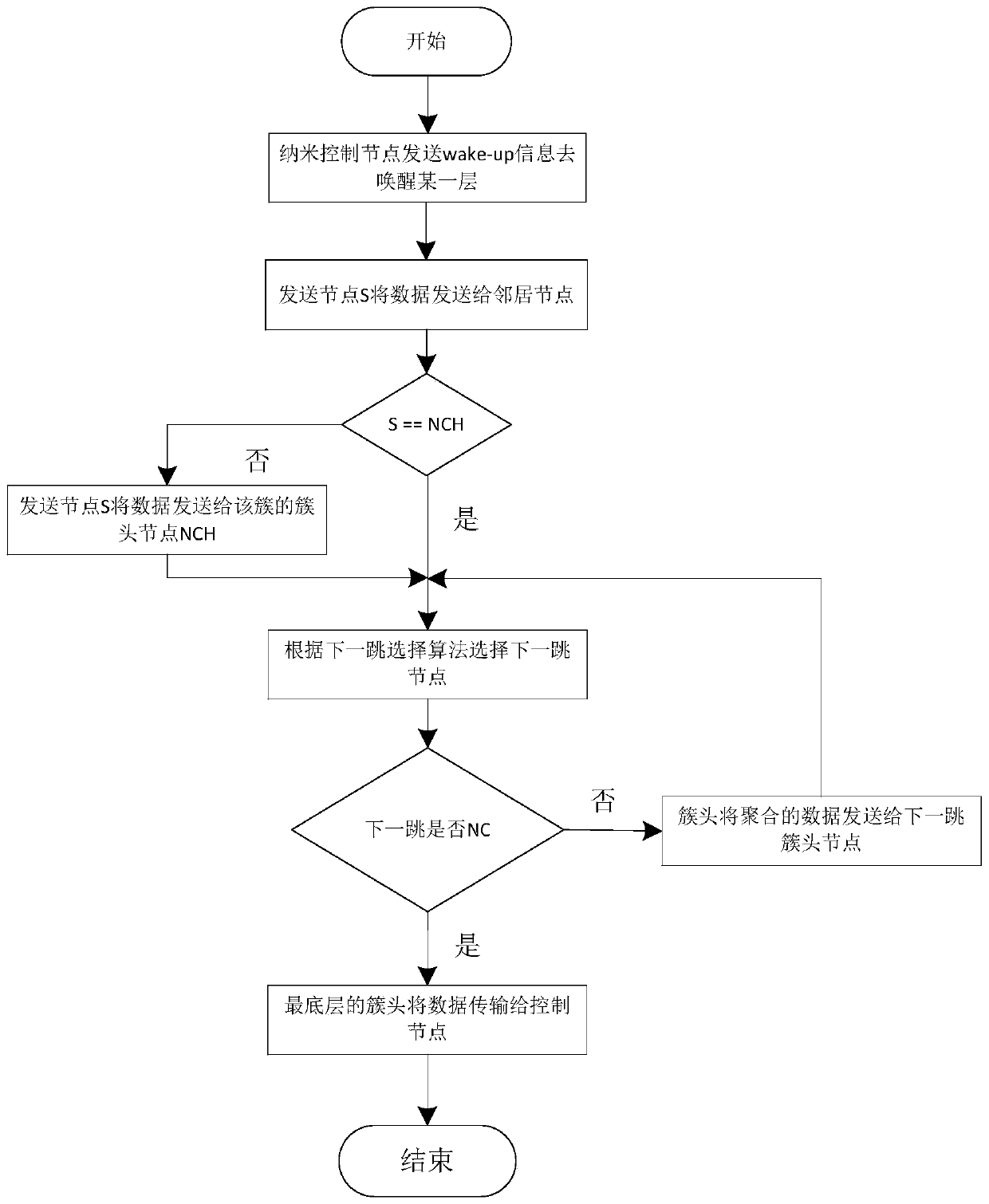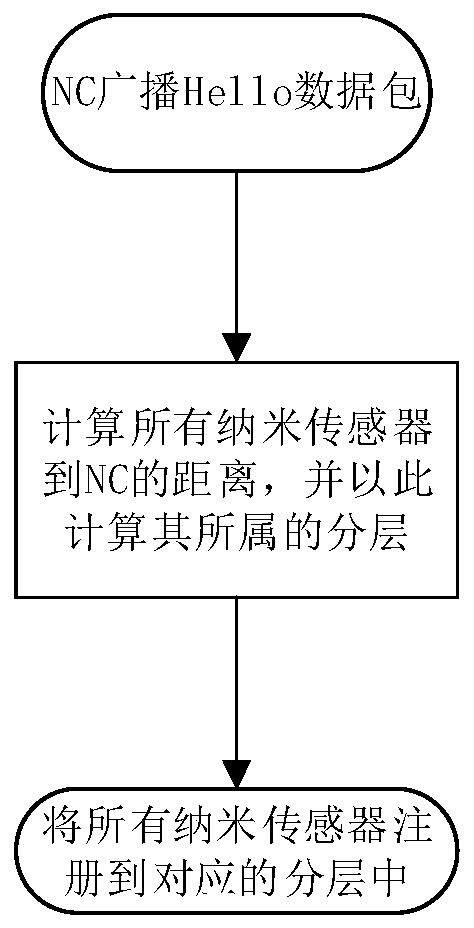Energy balance clustering routing algorithm applied to in-vivo nano-network
A technology of energy balance and nano-network, applied in the direction of reducing energy consumption, network topology, advanced technology, etc., can solve the problems of short communication distance and inability to adapt to classical routing algorithms, so as to prolong the life cycle and reduce the possibility of network paralysis , the effect of balancing energy consumption
- Summary
- Abstract
- Description
- Claims
- Application Information
AI Technical Summary
Problems solved by technology
Method used
Image
Examples
Embodiment Construction
[0012] The specific flow chart of the method is as follows figure 2 shown, including the following steps:
[0013] Step 1: First, take the control node (Nano Control, NC) as the center of the circle, and the layer radius is nr / 2, and layer the entire network, where r is the communication radius of the node, and n is the number of layers to be divided. The benefit of this layered algorithm is that the transmission range of each nanosensor can span adjacent layers. After receiving the broadcast signal from the NC, the nanosensors calculate their distance from the NC and divide them into corresponding layers, as shown in the attached figure 1 shown.
[0014] Step 2: Select the cluster head according to the remaining energy of the nodes in each layer, and each candidate node will multicast its competitiveness to the nodes in the same layer, as shown below
[0015]
[0016] In the formula, E resk is the remaining energy of node k, E max is the maximum energy of node k, acc...
PUM
 Login to View More
Login to View More Abstract
Description
Claims
Application Information
 Login to View More
Login to View More - R&D
- Intellectual Property
- Life Sciences
- Materials
- Tech Scout
- Unparalleled Data Quality
- Higher Quality Content
- 60% Fewer Hallucinations
Browse by: Latest US Patents, China's latest patents, Technical Efficacy Thesaurus, Application Domain, Technology Topic, Popular Technical Reports.
© 2025 PatSnap. All rights reserved.Legal|Privacy policy|Modern Slavery Act Transparency Statement|Sitemap|About US| Contact US: help@patsnap.com



